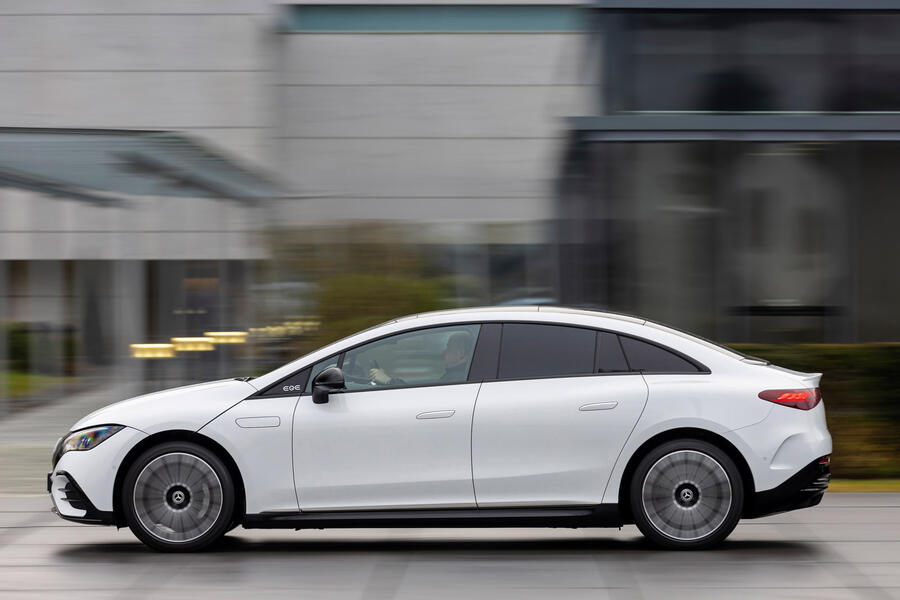The EQE is where Mercedes-Benz’s aspirations to seriously challenge the Tesla Model S and Porsche Taycan move into top gear.
Styled along similar lines to the larger EQS, it is the second model to be based on the German car maker’s dedicated EVA electric car platform, and the sixth fully electric Benz production model since the introduction of the Mercedes-Benz EQC back in 2019.
In rear-driven EQS 350 form, with its single electric motor and 90kWh battery, the new saloon has a claimed range of up to 410 miles on the WLTP test cycle – a figure Mercedes is banking on to lure a greater number of customers into its fast-growing electric car ranks.
Set to be priced broadly in line with the combustion-engine Mercedes-Benz E-Class, alongside which it will be sold in many of Mercedes' existing markets, the EQE is likely to start at around £65,000 in the UK, positioning it a good £25,000 below the EQS 450+.
Besides the Model S and Taycan, the EQE is also aiming at electric competitors such as the Xpeng P7 and soon-to-be-launched Nio ET7 in China, Mercedes' largest market by sales volume.
Production of the V295, as the EQE is codenamed internally, is planned to take place both at Mercedes' Bremen plant in Germany and a factory run in a joint venture with its largest shareholder, BAIC (Beijing Automotive Industry Corporation), in Beijing, China.
We will know a lot more when we actually drive the EQE later this year, but for now, after riding along with development engineers on roads around Stuttgart in Germany, it is clear it is a compelling alternative to the car it is planned to eventually replace, the E-Class.
![]()
The EQE 350 prototype we’ve travelled to Mercedes' research and development headquarters to experience is described as pre-production. However, it is devoid of disguise following the EQE’s world debut at the Munich motor show in September last year.











Join the debate
Add your comment
Obviously does not know his cars as stated price same as combustion engined Eclass £65k they start at £37795 will they sell?
Where is the variation between the Metc's EV models? Size aside, in terms of styling inside and out I see no distinction between this and the EQS!
This looks interesting, and seems to build on traditional Merc strengths of refinement and comfort without worrying about trying to be sporty. My one confusion is about the ‘Hyperscreen’ though: how do three £100 screens behind a sheet of glass cost £8k?